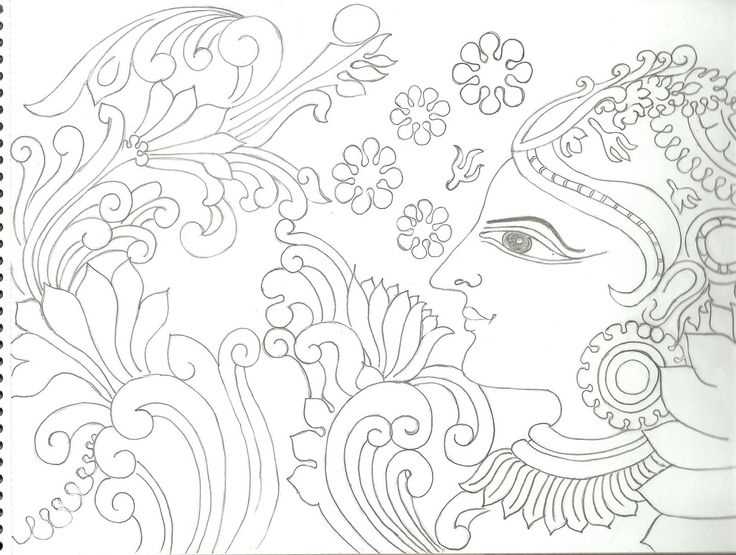
Brazil is renowned for its vibrant and diverse street art scene, which has become an integral part of the country’s cultural landscape. From the bustling streets of São Paulo to the colorful alleys of Rio de Janeiro, Brazilian cities are adorned with an array of captivating murals, graffiti, and stencil art.
Street art in Brazil is not just about aesthetics; it is a powerful form of expression and a voice for the marginalized, providing a platform to address social issues and convey political messages. Artists use the streets as their canvas, transforming once neglected spaces into captivating works of art that engage and inspire passersby.
One of the most influential street artists in Brazil is Eduardo Kobra. Known for his larger-than-life murals, Kobra’s works often depict iconic figures from Brazilian culture and history, such as Carmen Miranda and Oscar Niemeyer. His colorful and detailed pieces have gained international recognition and have helped put Brazilian street art on the global map.
However, street art in Brazil is not limited to famous artists. The scene is inclusive and diverse, giving space to both established creators and emerging talent. It is not uncommon for local communities to commission artists to paint murals that reflect their unique stories and traditions. This collaborative approach ensures that street art remains a reflection of the people and their lived experiences.
Street art in Brazil is constantly evolving and adapting to the ever-changing urban landscape. While some artworks have a short lifespan due to factors like weather and gentrification, others become permanent fixtures in the cityscape, turning the streets into open-air galleries. Whether it’s a thought-provoking political statement or a whimsical piece of art, street art in Brazil adds a vibrant and dynamic element to the country’s visual tapestry.
The Origins of Street Art in Brazil
Street art in Brazil has a vibrant and rich history that dates back to the 1970s. Like in many other countries, street art in Brazil began as a form of political expression and resistance against the oppressive military regime that ruled the country at the time.
During this period, artists started using the walls of the cities as their canvas to express their frustrations and critiques of the government. They used bold and colorful graffiti to make their voices heard and to bring attention to the social and political issues that plagued the country.
One of the pioneers of street art in Brazil was Cláudio Tozzi, an artist who began painting murals in São Paulo in the early 1970s. His work focused on depicting the struggles of the working class and raising awareness about inequality and injustice.
Another influential artist was Os Gêmeos, a pair of identical twin brothers who started their artistic journey in the late 1980s. They gained recognition for their distinctive style that combined elements of hip-hop culture, Brazilian folklore, and social commentary. Os Gêmeos played a crucial role in popularizing street art and making it more accessible to the general public.
In the 1990s, street art in Brazil continued to evolve and expand. Artists began experimenting with different techniques and styles, incorporating elements of stencil, wheatpaste, and large-scale murals. This period also saw the emergence of collectives and groups, such as the São Paulo-based group “Choque Cultural,” which aimed to promote and showcase street art in galleries and other traditional art spaces.
Today, street art has become a prominent part of Brazil’s cultural landscape. It has gained recognition not only in the country but also internationally, with Brazilian street artists participating in major exhibitions and festivals around the world. Street art in Brazil has evolved from political activism to a powerful form of artistic expression, reflecting the diverse and dynamic nature of the country.
The Evolution of Street Art in Brazil
Brazil has a rich history of street art, which has evolved over the years to become a vibrant and diverse form of expression. Street art in Brazil has its roots in the early 1950s, when artists started using spray cans to create large-scale murals on urban walls. These early pieces were often political in nature, reflecting the social and cultural issues facing the country at the time.
In the 1970s, street art in Brazil began to incorporate more abstract and experimental techniques. Artists started using stencils, stickers, and wheatpasting to create their works, allowing for more intricate and detailed designs. This period also saw the rise of graffiti tags, with artists creating unique signatures to mark their presence in the urban landscape.
The 1980s and 1990s: The Rise of Cultural Movements

During the 1980s and 1990s, Brazil experienced a period of political and cultural change, which had a significant impact on the street art scene. Artists started exploring themes of identity, race, and inequality, using their work to challenge the status quo and give voice to marginalized communities. This period also saw the emergence of artistic collectives, such as the “Pixadores,” who used bold lettering and symbols to create visually striking and socially conscious art.
Another important development during this time was the international recognition of Brazilian street art. Artists such as Os Gêmeos and Eduardo Kobra gained global acclaim for their bold and colorful murals, which often depicted scenes from Brazilian folklore and culture. Their work helped to put Brazilian street art on the map and inspire a new generation of artists.
The 2000s and Beyond: From Vandalism to Acceptance
In the early 2000s, street art in Brazil started to gain wider acceptance and recognition as a legitimate form of artistic expression. The city of São Paulo, in particular, became known for its vibrant street art scene, with artists transforming neglected buildings and public spaces into open-air galleries. The city even passed a law in 2009 that decriminalized graffiti, allowing artists to create their work without fear of prosecution.
Today, street art in Brazil continues to evolve and push boundaries. Artists are experimenting with new materials, techniques, and themes, blending traditional graffiti with other art forms such as sculpture and installation. Street art festivals and events are also becoming more common, providing artists with opportunities to showcase their work and engage with the community.
| Decades | Main Features |
|---|---|
| 1950s – 1960s | Political murals and social commentary |
| 1970s | Introduction of stencils and experimental techniques |
| 1980s – 1990s | Exploration of identity and rise of artistic collectives |
| 2000s-present | Acceptance and recognition as a legitimate art form |
The Role of Street Art in Brazilian Culture
Street art has always played a significant role in Brazilian culture, serving as a form of expression, protest, and storytelling. From the vibrant streets of São Paulo to the colorful favelas of Rio de Janeiro, street art has become an integral part of the urban landscape in Brazil.
Form of Expression
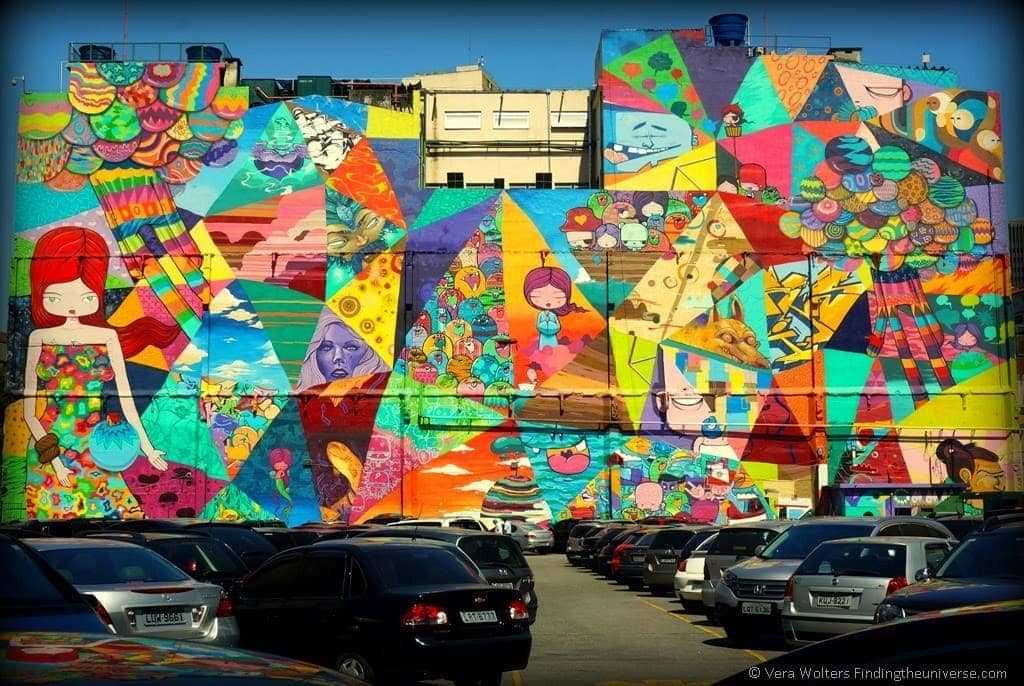
Street art provides a platform for artists to express their creativity and ideas freely. It allows them to communicate with the public in an unconventional and accessible way. Brazilian artists use street art as a means to express their identity, culture, and social issues they care about. Through their art, they convey messages of hope, resistance, and empowerment.
Protest and Social Commentary
Street art in Brazil has often been used as a form of protest and social commentary. Artists use their work to shed light on political issues, social inequality, and human rights violations. They challenge the status quo and provoke discussions among the public. Street art in Brazil has served as a powerful tool to bring attention to marginalized communities and address systemic issues.
| Benefits of Street Art in Brazil | Examples of Street Art in Brazil |
|---|---|
| 1. Cultivating a sense of community | 1. The vibrant murals in Vila Madalena, São Paulo |
| 2. Beautifying urban spaces | 2. Eduardo Kobra’s iconic mural of Brazilians in Rio de Janeiro |
| 3. Preserving cultural heritage | 3. Os Gêmeos’ distinctive graffiti characters in São Paulo |
Overall, street art plays an essential role in Brazilian culture by giving a voice to the people, sparking conversations, and adding vibrancy to the urban environment. It has become a symbol of Brazil’s rich cultural heritage and its dynamic and diverse society.
The Influence of Urban Environment on Street Art
Street art is heavily influenced by the urban environment in which it is created. The bustling city streets, the vibrant colors of the buildings, and the ever-changing scenery all play a role in shaping the street art scene.
One of the key influences of the urban environment on street art is the constant exposure to different cultures and perspectives. Cities are melting pots of diverse communities, and this diversity is reflected in the art that adorns the streets. Artists are exposed to a variety of ideas, styles, and techniques, which they can then incorporate into their own work. This cultural exchange enriches the street art scene and makes it more dynamic and inclusive.
The physical layout of the city also has a significant impact on street art. Artists often seek out unconventional spaces for their creations, such as abandoned buildings, alleyways, and construction sites. These spaces offer a blank canvas for their art, allowing them to transform neglected or forgotten spaces into vibrant, engaging artworks. The juxtaposition of the art against the urban landscape creates a powerful visual impact and invites viewers to rethink their surroundings.
Public opinion and social issues
Another way in which the urban environment influences street art is through public opinion and social issues. Cities are centers of social and political change, and street art often serves as a form of expression and protest. Artists use their work to make statements about the issues that affect their communities, from inequality and poverty to environmental degradation and gentrification. The urban environment provides a platform for artists to voice their opinions and engage in important conversations with the public.
Changing urban landscapes

Lastly, the ever-evolving nature of cities plays a role in shaping street art. Urban environments are constantly changing, with buildings being demolished or renovated, new construction projects emerging, and neighborhoods gentrifying. Street art responds to these changes, sometimes by adapting to them and other times by challenging them. Artists may take advantage of construction sites to create temporary installations or use street art to document the disappearing landmarks of their city. The transient nature of street art reflects the transient nature of the urban environment and adds to its richness and complexity.
The Diversity of Street Art Styles
Street art in Brazil encompasses a wide range of artistic styles, reflecting the diverse cultural heritage and creative expression of its artists. From vibrant murals to intricate stencil work, the streets of Brazil are a canvas for various art forms.
Muralism

Muralism is a prominent style of street art in Brazil, characterized by large-scale paintings that cover entire walls or buildings. These murals often depict political or social messages, showcasing the artists’ views on current issues. The vibrant colors and bold imagery of muralism make it a captivating form of street art.
Stencil Art

Stencil art is a popular street art style in Brazil, where artists use stencils to create detailed and intricate designs on walls and other surfaces. This technique allows for precise and consistent execution, resulting in visually striking artworks. Stencil art is often used to convey political or social commentary and can be found throughout the streets of Brazil.
Graffiti
Graffiti is an integral part of the street art scene in Brazil, with artists using spray paint to create elaborate and colorful designs. From tags and throw-ups to large-scale murals, graffiti artists leave their mark on the city’s walls. Graffiti in Brazil is known for its vibrant colors, intricate lettering, and expressive styles.
Interactive Installations
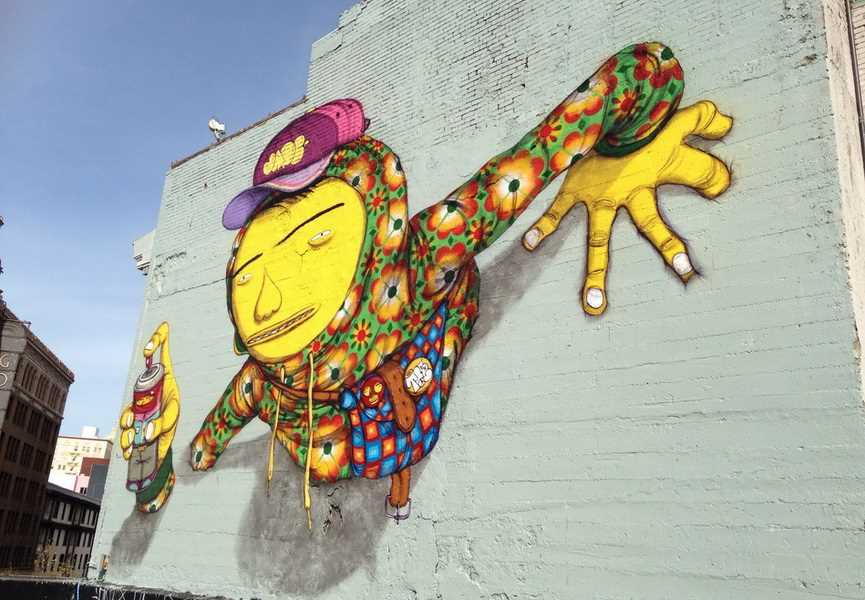
Another emerging trend in Brazilian street art is the use of interactive installations. Artists create three-dimensional artwork that invites audience participation and engagement. These installations can range from sculptures to temporary structures and allow viewers to actively interact with the art, blurring the line between the artist and the observer.
The diversity of street art styles in Brazil showcases the country’s rich artistic heritage and serves as a platform for social and political commentary. From the grand murals to the intricate stencil work, each style brings its unique flavor to the vibrant streets of Brazil.
The Impact of Street Art on Local Communities

Street art in Brazil has had a profound impact on local communities, shaping both their physical appearance and cultural identity. By transforming once dull and neglected spaces into vibrant and expressive canvases, street art has breathed new life into neighborhoods, fostering a sense of pride and community engagement.
One of the most significant ways that street art has impacted local communities is by promoting social and political activism. Street artists often use their art as a means to communicate powerful messages and raise awareness about important social issues. From advocating for human rights to challenging societal norms, these murals and graffiti serve as catalysts for dialogue and change within the community.
In addition to its role in activism, street art has also contributed to the economic revitalization of neighborhoods. Murals and graffiti have the power to attract tourists and visitors, boosting local businesses and creating employment opportunities for residents. By transforming public spaces into cultural destinations, street art has helped put previously overlooked communities on the map, attracting investment and driving economic growth.
Furthermore, street art has been instrumental in promoting artistic expression and creativity among young people. It provides an alternative and accessible platform for artists to showcase their talent and gain recognition. By providing an outlet for self-expression, street art has empowered individuals and encouraged a sense of belonging within the community.
Overall, the impact of street art on local communities in Brazil is undeniable. It has the power to inspire, provoke thought, and drive positive change. Through its vibrant, expressive, and thought-provoking imagery, street art has become a powerful tool for reshaping the physical, social, and cultural landscape of Brazilian neighborhoods.
The Challenges Faced by Street Artists
Street art in Brazil faces several challenges that artists must navigate in order to share their work with the public. These challenges include:
- Legal Issues: Street art is often seen as illegal in many parts of Brazil, resulting in artists facing fines or even imprisonment for creating graffiti without permission. This creates a constant fear of getting caught and punished for expressing themselves through their art.
- Limited Spaces: Finding suitable spaces to create street art can be a challenge in Brazil. Many public walls and surfaces are privately owned or heavily monitored, making it difficult for artists to find places to display their work. Without a space to create, artists may struggle to find an audience for their art.
- Public Perception: Street art in Brazil is often stigmatized and associated with vandalism or criminal activity. This negative perception can make it hard for street artists to gain recognition and support for their work. Overcoming these stereotypes and changing public perception is a constant challenge for street artists.
- Lack of Recognition: Street art is often overlooked as a legitimate form of artistic expression in Brazil. Many artists struggle to gain recognition and support from the art community and institutions. Without recognition, it can be challenging for artists to build a career and make a living from their art.
Despite these challenges, street artists in Brazil continue to push boundaries and use their art to create social commentary, express their individuality, and beautify urban spaces. Their resilience and creativity contribute to the vibrant art scene in the country.
The Role of Street Art Festivals and Events
Street art festivals and events have played a significant role in showcasing the vibrant and diverse street art scene in Brazil. These festivals bring together local and international artists, providing them with a platform to express their creativity and share their artwork with a wider audience.
1. Encouraging artistic expression
Street art festivals and events create a space where artists can freely express themselves through their work. By providing a legal and sanctioned environment, these events help artists overcome the barriers often associated with illegal graffiti and vandalism. This encourages artists to push their creative boundaries and experiment with different styles and techniques.
Additionally, these festivals often invite artists from diverse backgrounds, fostering a sense of collaboration and exchange. This allows for the blending of different artistic influences, resulting in unique and innovative pieces of street art.
2. Transforming public spaces
Street art festivals and events play a crucial role in transforming public spaces into vibrant and engaging artistic landscapes. By bringing art to the streets, these events aim to reclaim and revitalize neglected areas, making them more visually appealing and inviting for local communities and visitors.
The creation of large-scale murals, colorful graffiti, and intricate installations can completely change the atmosphere of a neighborhood, turning it into an open-air gallery. This not only beautifies the surroundings but also creates a sense of pride and ownership among the residents.
Moreover, by incorporating local themes and narratives into their artwork, street artists can contribute to the preservation and celebration of a city’s heritage and cultural identity.
The International Recognition of Brazilian Street Art
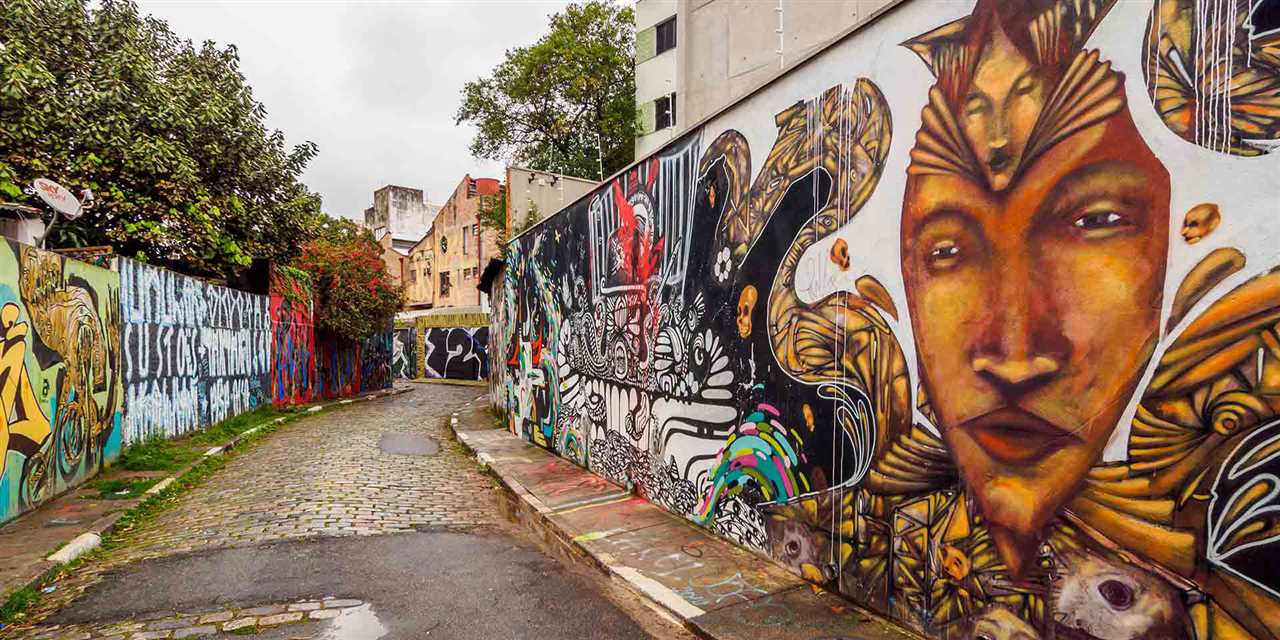
Brazilian street art has gained international recognition in recent years, becoming a vibrant and influential art movement around the world. Artists such as Os Gemeos, Criola, and Eduardo Kobra have played a key role in putting Brazilian street art on the global map.
A Unique Blend of Styles
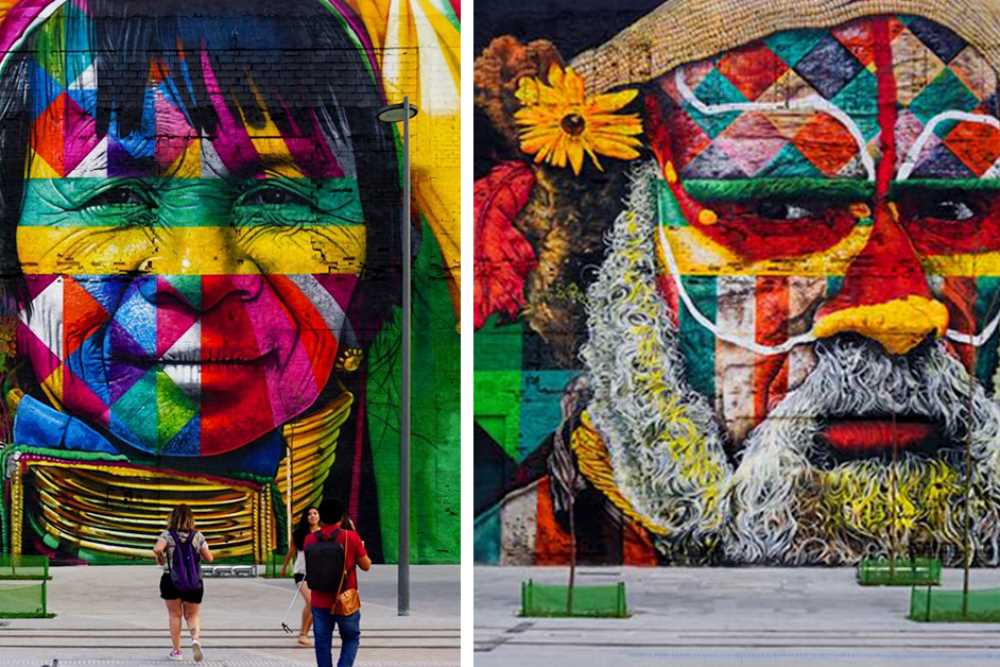
Brazilian street art is known for its unique blend of styles, combining elements of graffiti, muralism, and graphic design. This fusion of artistic approaches results in visually striking artworks that make a powerful statement.
Social and Political Commentary
Many Brazilian street artists use their work as a platform for social and political commentary. They address issues such as inequality, racism, and environmental destruction, sparking conversations and provoking thought among viewers.
The global recognition of Brazilian street art can be attributed to several factors. Firstly, the talent and creativity of Brazilian artists have caught the attention of art curators, collectors, and enthusiasts worldwide. Their use of vibrant colors, intricate details, and powerful imagery has captivated audiences and earned them respect in the art world.
Secondly, social media and the internet have played a significant role in spreading awareness of Brazilian street art. Platforms like Instagram, Pinterest, and YouTube have allowed artists to showcase their work to a global audience, gaining followers and making connections with other artists and enthusiasts.
Lastly, international street art festivals and exhibitions have provided Brazilian artists with opportunities to showcase their talent on a bigger stage. Events such as the Meeting of Favela and the International Graffiti Fine Art Biennial have attracted artists and visitors from around the world, solidifying Brazil’s reputation as a street art hub.
The Future of Street Art in Brazil

One of the factors contributing to the future of street art in Brazil is the growing recognition and acceptance of this art form. While graffiti was once seen as vandalism, it is now increasingly considered a legitimate art form. The Brazilian government has taken steps to embrace and support street art, with initiatives such as legalizing certain murals and implementing dedicated spaces for artists to create their work.
This newfound acceptance has not only provided artists with more opportunities to showcase their talents but has also attracted international attention. Artists from around the world have flocked to Brazil to participate in street art festivals and collaborate with local artists. This cross-pollination of ideas and styles has led to the creation of truly unique and groundbreaking street art pieces.
Another factor driving the future of street art in Brazil is technology. In an increasingly digital age, street artists are incorporating elements of technology into their work. From interactive murals that come to life with the use of augmented reality to 3D street art that creates optical illusions, technology has opened up new possibilities for artistic expression.
Furthermore, social media has played a pivotal role in the development and promotion of street art in Brazil. Platforms such as Instagram and Facebook have provided artists with a global stage to showcase their work, garnering them a larger audience and allowing for greater exposure. This virtual gallery has allowed street art to transcend physical boundaries and reach people from all walks of life.
Looking ahead, the future of street art in Brazil is filled with endless possibilities. With continued support from the government, increasing recognition from the public, and the integration of technology, the street art scene in Brazil will undoubtedly continue to flourish and push the boundaries of artistic innovation.
Celebrating the Beauty of Brazilian Street Art
Brazil is home to some of the most vibrant and captivating street art in the world. From the colorful murals of São Paulo to the graffiti-filled streets of Rio de Janeiro, this country boasts a rich and diverse art scene that is celebrated by locals and travelers alike.
One of the reasons why Brazilian street art is so unique and beautiful is its ability to convey powerful messages and capture the spirit of the country. Many artists use their work as a way to address social and political issues, giving a voice to marginalized communities and sparking important conversations.
Brazilian street art is not only visually stunning, but it also reflects the cultural diversity and creativity of the country. The art form draws inspiration from a variety of sources, including indigenous art, Afro-Brazilian culture, and contemporary global trends. This fusion of influences results in artwork that is both visually striking and deeply meaningful.
The Evolution of Brazilian Street Art

Over the years, Brazilian street art has evolved and become more recognized as a legitimate art form. What was once considered vandalism is now celebrated as a form of creative expression and a reflection of the country’s rich artistic heritage.
The growth of street art in Brazil can be attributed, in part, to the emergence of organized events and festivals dedicated to showcasing this unique art form. These events provide a platform for artists to share their work with a wider audience and foster a sense of community among street artists.
The Influence of Brazilian Street Art
Brazilian street art has not only influenced the local art scene but has also made an impact on the global art world. Artists like Eduardo Kobra and Os Gêmeos have gained international recognition for their vibrant and visually stunning murals, which can be found in cities around the world.
By celebrating the beauty of Brazilian street art, we not only appreciate the talent and creativity of the artists but also recognize the power of art to transform public spaces and create a sense of belonging and identity within communities.
| Key Attributes of Brazilian Street Art |
|---|
| Colorful and vibrant |
| Social and political messages |
| Cultural diversity and fusion |
| Influence on global art scene |
| Transformative power |

I am a mural enthusiast and a fervent admirer of street art. Rather than creating murals myself, I am passionate about collecting them. My love for street art knows no bounds. I am dedicated to curating and cherishing these artworks that grace the streets. My collection stands as a testament to my profound appreciation for this form of artistic expression.
read about me



